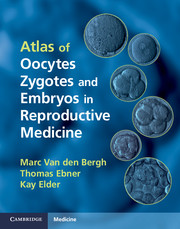Introduction
Published online by Cambridge University Press: 05 October 2014
Summary
Clinical embryologists invest a major part of their working day in observing oocytes, zygotes and embryos in order to optimize the chance of selecting an embryo that has the greatest potential of leading to the birth of a healthy baby after transfer (Puissant et al., 1987). Through gradually evolving processes that are largely based upon experience, in vitro fertilization (IVF) laboratories invariably develop their own systems of assessment and scoring. In 2011, two major professional societies, Alpha (Scientists in Reproductive Medicine) and the European Society for Human Reproduction and Embryology (ESHRE) Special Interest Group for Embryology reached a consensus on gamete and embryo assessment, which was published as the Istanbul Consensus or I.C. (Alpha Scientists in Reproductive Medicine and ESHRE Special Interest Group of Embryology, 2011). Practice guidelines that include assessment of embryo morphology have also been proposed by ASEBIR, the Spanish Embryologists’ Society (Torello et al., 2005), and by the UK's Association of Clinical Embryologists (ACE) in collaboration with the British Fertility Society (Cutting et al., 2008). Although it is universally recognized that assessment and scoring of gametes and embryos is largely a matter of experience, which requires a relatively long learning period and is known to be subject to substantial intra-observer variation (Arce et al., 2006; Baxter Bendus et al., 2006; Paternot et al., 2009), dedicated teaching makes it possible to achieve excellent levels of agreement regarding embryo classification. This atlas has been compiled as a teaching tool, providing a full collection of oocytes and embryos at each stage of development, placed within the context of clinical and treatment parameters associated with each couple. The cases illustrated were gathered from routine patient treatment cycles at two centres: Kantonsspital Baden A.G., Switzerland (KSB) and Kinderwunsch Zentrum Landes- Frauen- und Kinderklinik (LFKK) in Linz, Austria.
- Type
- Chapter
- Information
- Publisher: Cambridge University PressPrint publication year: 1998



